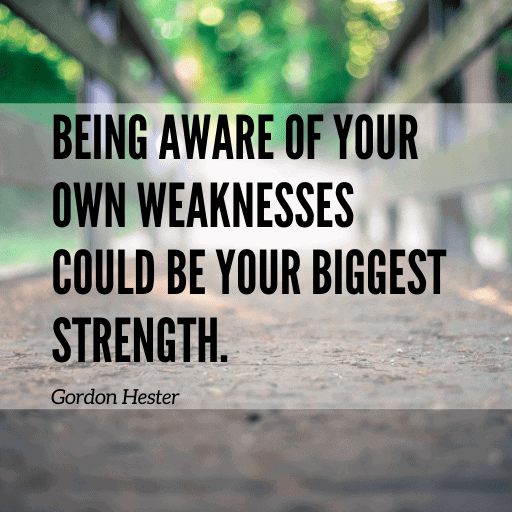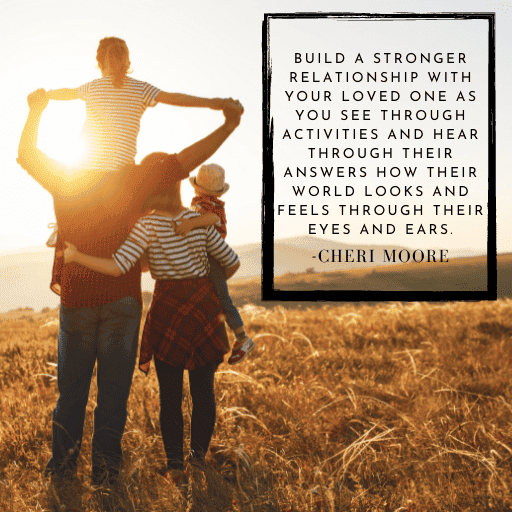Most of us have heard about the 5 Love Languages: words of affirmation, quality time, receiving gifts, acts of service, and physical touch. Knowing your loved one’s love language helps you show them love in a way that meets their needs. Likewise, knowing your loved one’s auditory-visual needs strengthens your relationship.
Understand Their Innate Strengths and Weaknesses
After having three children, I learned they were each born with a genetic predisposition for their love language. Likewise, we are all born with innate strengths and relative weaknesses within our hearing and visual system.

One of the best ways to show love is to learn how to meet your loved one’s auditory and visual needs. This year, you can give your loved one a unique Valentine’s Day present. Make a commitment to your loved one. Promise to learn about their auditory processing and visual processing needs. Then, change your behaviors to meet their needs.
Yes, change your behaviors. For example, if you learn that vision blurs and doubles, volunteer to chop the vegetables. If you speak and receive no answer, get their attention. Then, speak to them without mentioning you already spoke.
5 Ways to Learn About Auditory-Visual Needs and Grow in Empathy and Love
1. Purposeful Interactions
I encourage you to listen and observe with intention. Listen for the meaning behind their words. Observe their instinctive responses. Ask questions and challenge your assumptions.
The Moore Auditory-Visual Observation Activities Booklet helps you begin to understand your loved one’s auditory processing skills and visual processing skills. Activities show you their strengths and relative weaknesses. Then, what you learn helps you adapt your behaviors to meet the needs of your loved ones. The activities are most appropriate for ages five and older.
Do you have a toddler? If so, build a stronger relationship with your toddler by using our Encouraging Observations Through Purposeful Play booklet. The booklet contains a visual observation checklist, fun activities, a list of visual processing developmental skills, and an action resource page.
We just finished writing our preschool edition. The preschool edition has activities that promote development through play. You meet your loved one’s needs by starting a new habit. Spend one-on-one time with your preschooler joining them in their play versus taking over their play. My observation checklist keeps you mentally busy. Thus, it is a bit easier to join them in play.
Learn our release date by joining Our Moore Auditory Integration Training Community.
2. Be Mindful About the Sound Environment
Imagine for a moment that you have chronic congestion easily seen by others. Are you aware that congestion distorts sounds and diminishes your hearing? Thus, more time is needed to figure out what was heard. This auditory-visual need in different ages may appear like:
The preschooler simply stares.
The child or teen says, “You know I do not feel good.”
The adult says, “What?”
All ages need you to speak louder and more slowly. Most importantly, get their attention before you start talking. Also, make sure the environment is quiet. If the TV is on, turn it off. Give them your full attention.
In conversation, it is also important to make sure they understood what was said. With children, follow up with a question like, “What do I need you to do?”. With teens and adults, ask them for their input on the topic.

Now, imagine a person of any age with hidden or typical hearing loss that is permanent. Unless you know about behaviors associated with diminished hearing, your loved one has an invisible challenge not recognized by their loved ones. Since many of our loved ones develop age-related hearing loss, read about some of these behaviors in the blog post, Surprising Behavioral Characteristics of an Unknown Hearing Loss.
Diminished Hearing Can Cause Visual Processing Difficulties
Interesting Facts:
In little ones, chronic congestion disrupts visual development (1). Researchers (2) found that eardrum movement occurs 10 msec before detectable eye movements. When fluid fills the middle ear, the eardrum is more rigid. Fluid can even be pushed against the eardrum preventing proper movement.
When hearing is diminished it has a physiological impact on the hearing and vision system.
3. Improve Emotional Health
Hearing loss and visual processing difficulties create constant stress on the body. Imagine living in a world where you are always on guard for painful sounds. Or, imagine feeling off-balance and clumsy. because objects shift or move. Thus, you often knock over your cup.

Even while reading, the brain can use one eye and then switch to the other eye. This makes it very difficult to keep one’s place while reading. It is almost impossible to copy the lesson written on the board. Letters dance and move. No wonder your loved one forgot to read your note. Does your loved one avoid writing?
This kind of auditory-visual need is draining. Share some hope with them by sharing:
- 10 to 14 days of auditory integration training, 6 months apart, based on a comprehensive hearing exam strengthens the hearing system improving sound tolerance.
- A developmental optometrist specializing in evaluating visual processing skills can provide vision therapy to improve the ability for both eyes to work together, to keep what is seen clear and single.
4. Schedule a Free Phone Conference
You can talk with me one-on-one about your loved one during a free 30 minute phone consultation.
I will
- Listen
- Help you learn how to make a more comfortable environment for them or yourself.
- Follow up with an email with information about doctors specializing in your area of concern
5. Moore Auditory-Visual Questionnaire
Your loved ones know they are smart. However, their ears and eyes are preventing them from working at their level of intelligence. Their ears and eyes are preventing them from being able to move and interact instinctively.
The Moore Auditory-Visual Questionnaire gives you the opportunity to learn about the intensity and frequency of behaviors associated with:
- Sound sensitivities
- Auditory processing difficulties
- Diminished hearing and hearing loss
- Visual processing difficulties contributing to visual-motor delays
Prequestionnaire activities and observations help you acknowledge your loved one’s world of auditory and visual challenges.
After you complete the questionnaire, you will receive your Moore Auditory-Visual Questionnaire report. Please share it with me by email to receive immediate help. I provide advocacy support and guide you step-by-step through recommendations building a plan with you.
Understanding Auditory-Visual Needs Brings People Closer Together
Regardless of age, you can strengthen your relationship with your loved ones. You recognize their difficulty and validate their hardships when you change your behaviors to meet their needs.

References
- Casselbrant, Gravel, Margolis, Bellussi,, Dhooge, & Downs, 2002; Vernon- Feagans & Proctor, 1994; Hasenstab in 1992; and Benasich & Tallal, 2002.
- Gruters, Kurtis; Murphy, David; Jenson, Cole; Smith, David; Shera, Christopher; Groh, Jennifer (Jan 23, 2018). The eardrums move when the eyes move: A mustisensory effect on the mechanics of hearing. Proc National Academic Science U S A. 115 (6). Doi: 10.1073/pnas.1717948115. Retrieved from https://pubmed.ncbi.nlm.nih.gov/29363603/
- Zargi, M., Boltezar, H. (1992). Effects of recurrent otitis media in infancy on auditory perception and speech. American Journal of Otolaryngology. 13 (6), 366.) (Supported in June 2003, Report of the Eighth Research Conference; Supported in 2010 by Ungkanont, K., Charuluxananan, S., Komoltic C







0 Comments